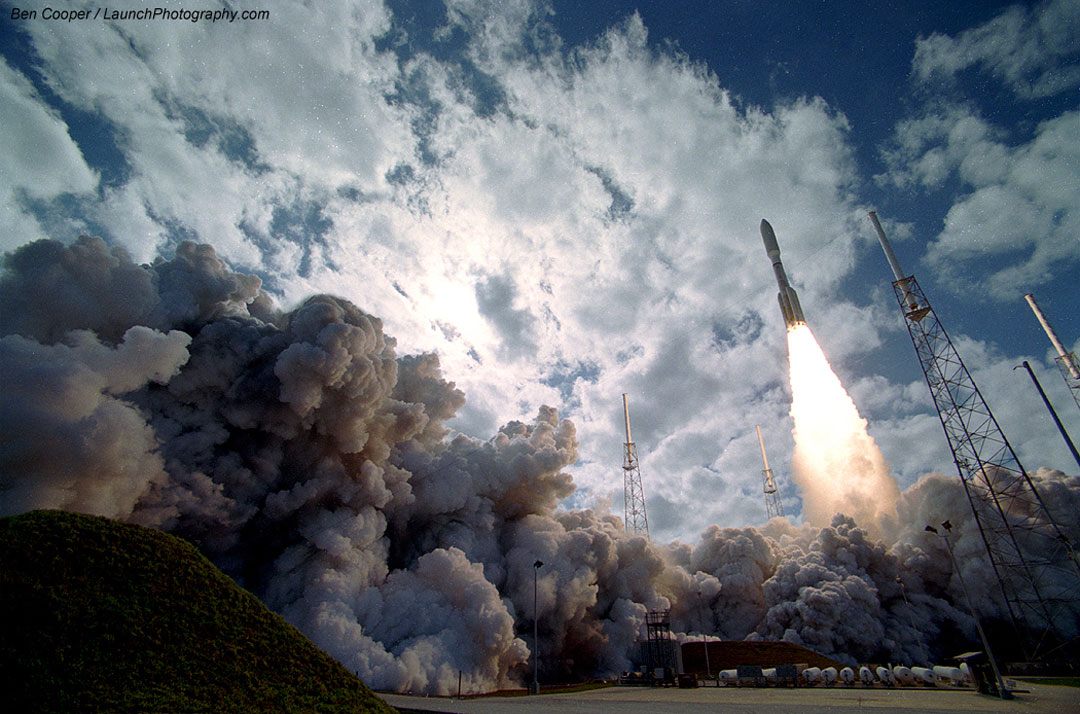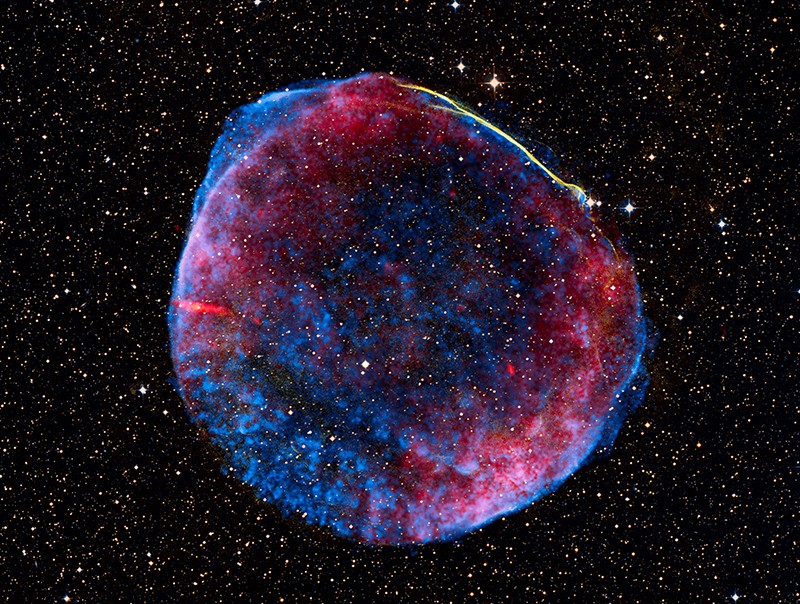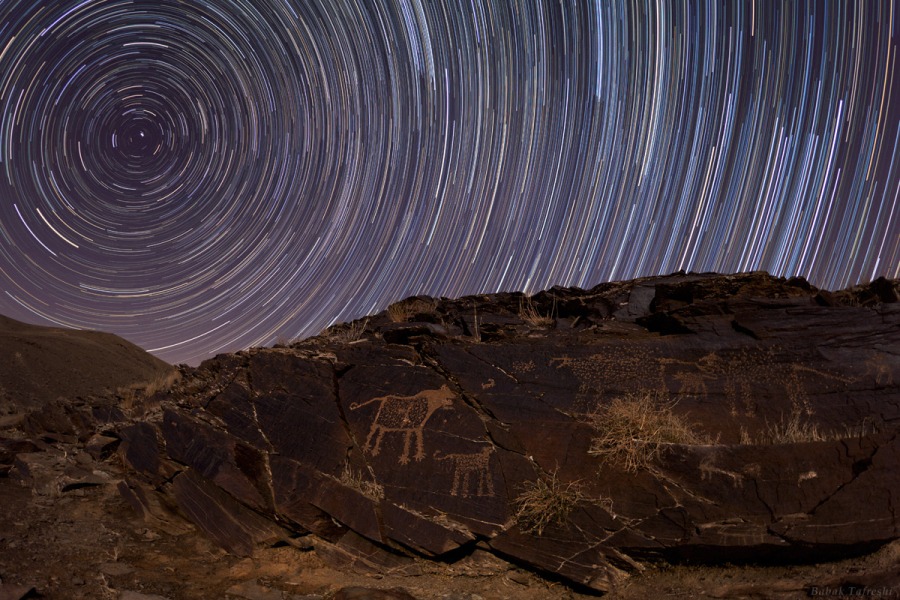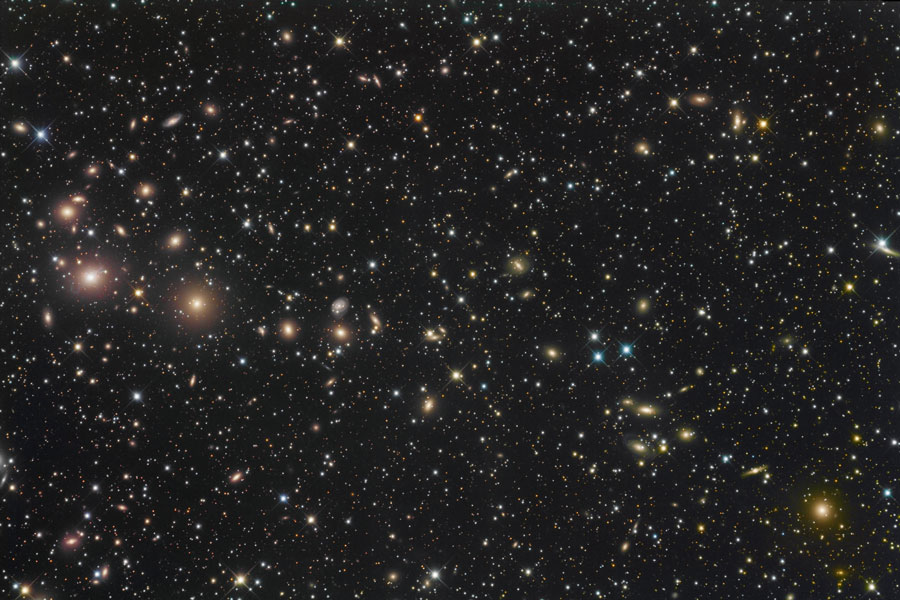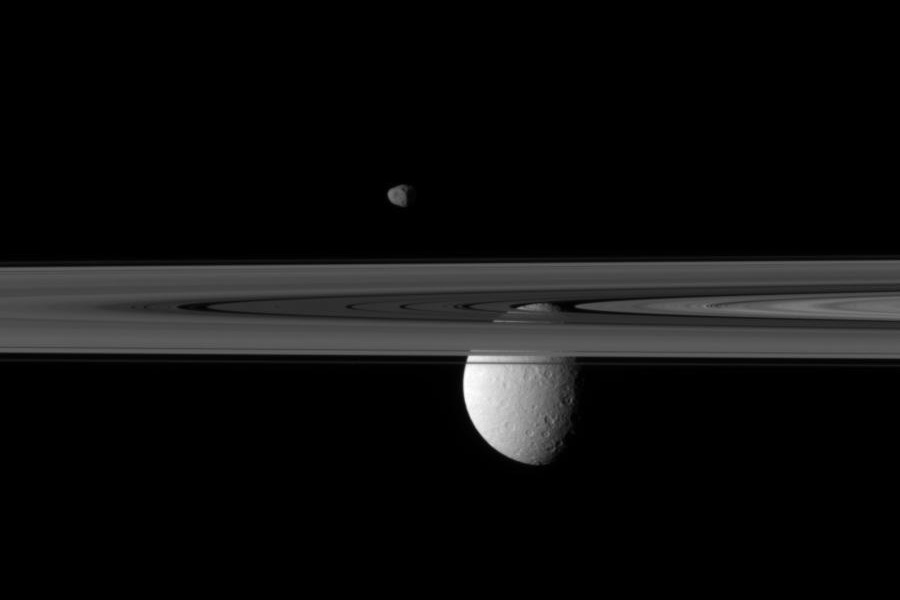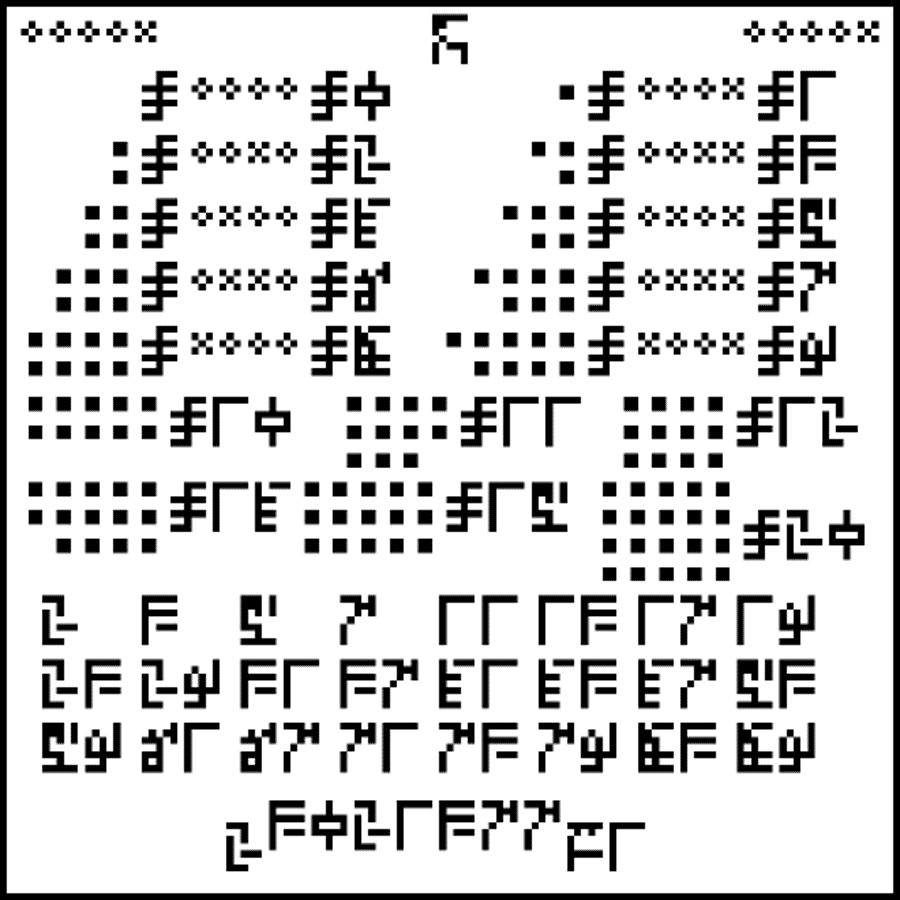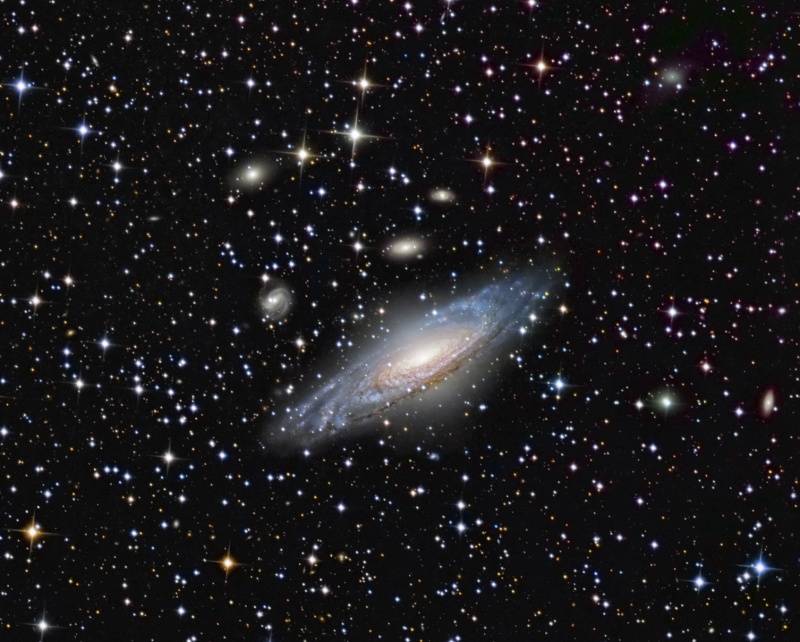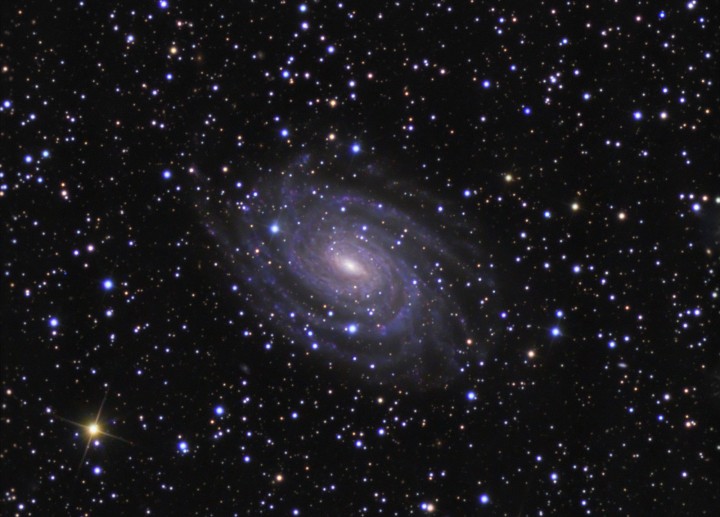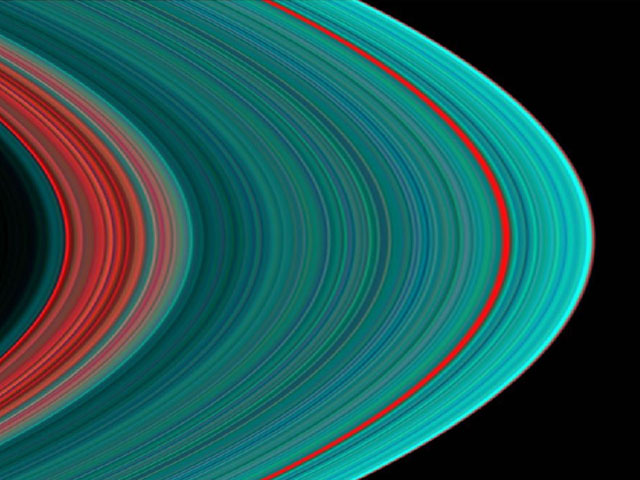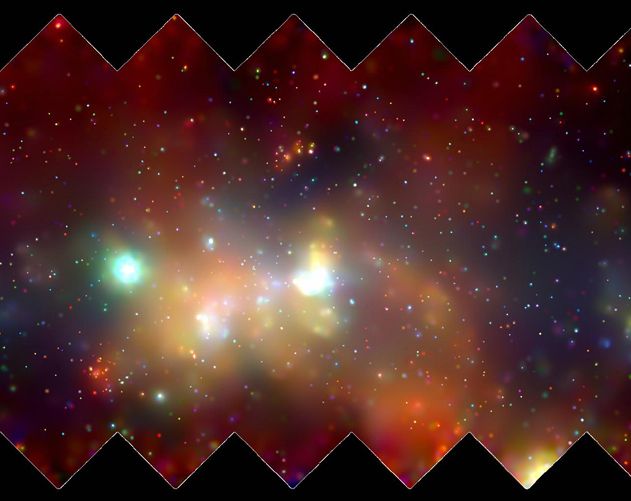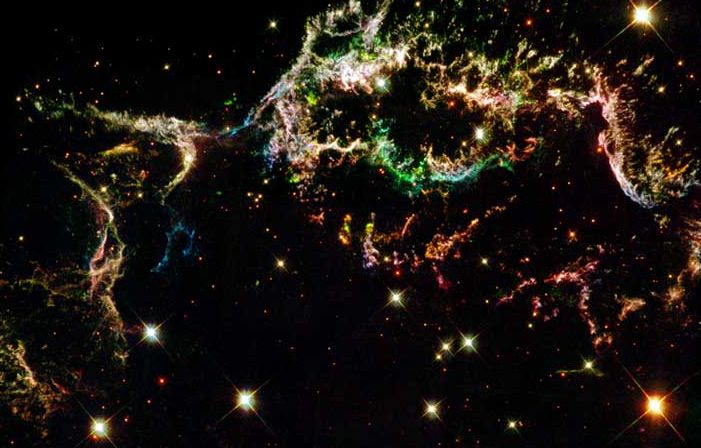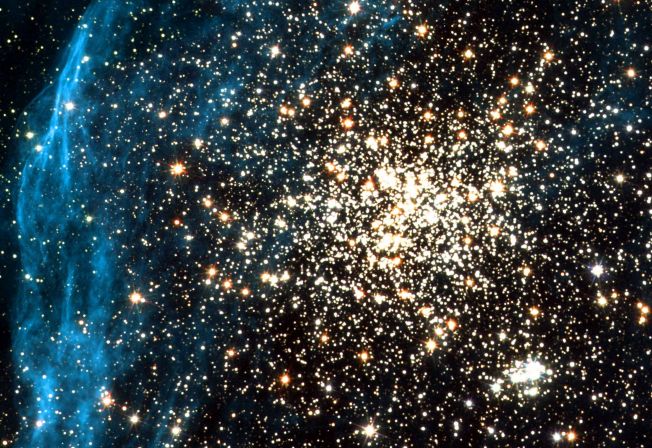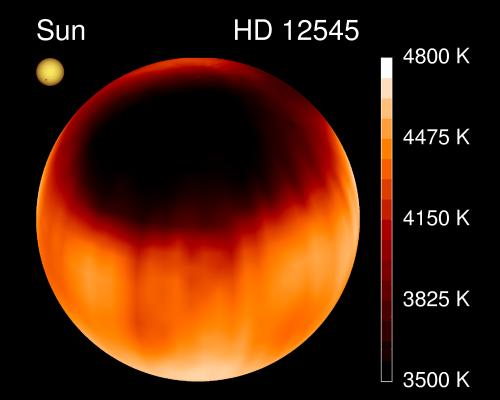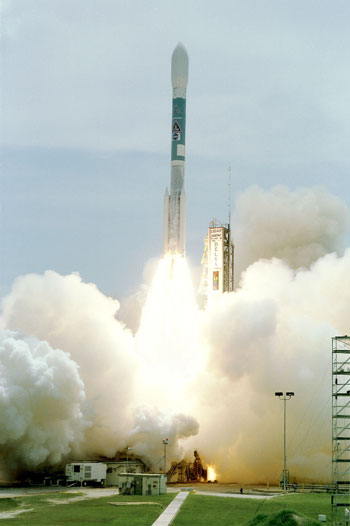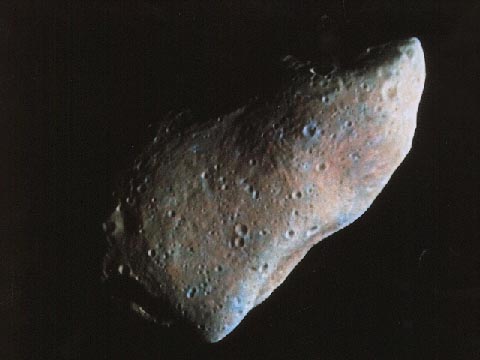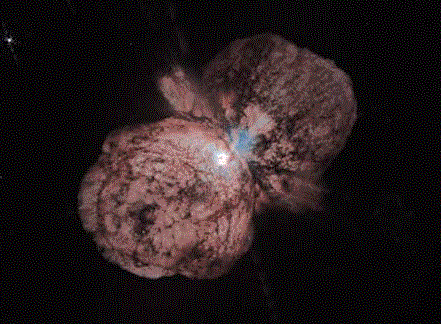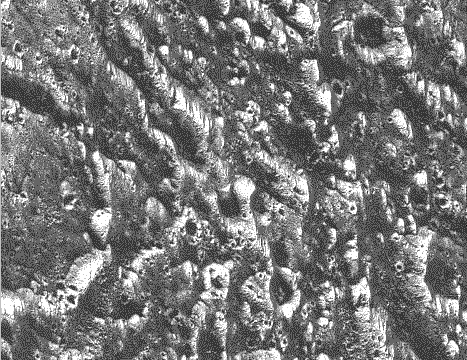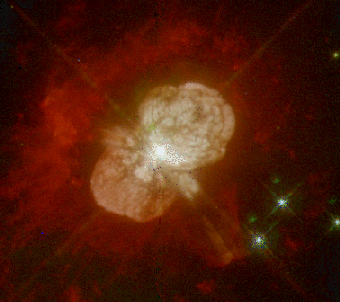| << Previous | Index | Next >> |
2015 Destination: Pluto. The New Horizons spacecraft roared off its launch pad at Cape Canaveral in Florida, USA in 2006 toward adventures in the distant Solar System. The craft is the fastest spaceships ever launched by humans, having passed the Moon only nine hours after launch, and Jupiter only a year later. After spending almost a decade crossing the Solar System, New Horizons will fly past Pluto on Tuesday. Pluto, officially a planet when New Horizons launched, has never been visited by a spacecraft or photographed up close. After Pluto, the robot spaceship will visit one or more Kuiper Belt Objects orbiting the Sun even further out than Pluto. Pictured, the New Horizons craft launches into space atop a powerful Atlas V rocket.
2014 A new star, likely the brightest supernova in recorded human history, lit up planet Earth's sky in the year 1006 AD. The expanding debris cloud from the stellar explosion, found in the southerly constellation of Lupus, still puts on a cosmic light show across the electromagnetic spectrum. In fact, this composite view includes X-ray data in blue from the Chandra Observatory, optical data in yellowish hues, and radio image data in red. Now known as the SN 1006 supernova remnant, the debris cloud appears to be about 60 light-years across and is understood to represent the remains of a white dwarf star. Part of a binary star system, the compact white dwarf gradually captured material from its companion star. The buildup in mass finally triggered a thermonuclear explosion that destroyed the dwarf star. Because the distance to the supernova remnant is about 7,000 light-years, that explosion actually happened 7,000 years before the light reached Earth in 1006. Shockwaves in the remnant accelerate particles to extreme energies and are thought to be a source of the mysterious cosmic rays.
2013
[imghover6=http://apod.nasa.gov/apod/image/1307/20 ... ers950.jpg]http://apod.nasa.gov/apod/image/1307/20 ... 0_data.jpg[/imghover6]Image Credit & Copyright: Fernando Cabrerizo
2012 Engraved in rock, these ancient petroglyphs are abundant in the Teimareh valley, located in the Zagros Mountains of central Iran. They likely tell a tale of hunters and animals found in the middle eastern valley 6,000 years ago or more, etched by artists in a prehistoric age. In the night sky above are star trails etched by the rotation of planet Earth during the long composite exposure made with a modern digital camera. On the left, the center of the star trail arcs is the North Celestial Pole (NCP), the extension of Earth's axis into space, with Polaris, the North Star, leaving the bright, short, stubby trail closest to the NCP. But when these petroglyphs were carved, Polaris would have made a long arc through the night. Since the Earth's rotation axis precesses like a wobbling top, 6,000 years ago the NCP was near the border of the constellations Draco and Ursa Major, some 30 degrees from its current location in planet Earth's sky.
2011 Here is one of the largest objects that anyone will ever see on the sky. Each of these fuzzy blobs is a galaxy, together making up the Perseus Cluster, one of the closest clusters of galaxies. The cluster is seen through a foreground of faint stars in our own Milky Way Galaxy. Near the cluster center, roughly 250 million light-years away, is the cluster's dominant galaxy NGC 1275, seen above as a large galaxy on the image left. A prodigious source of x-rays and radio emission, NGC 1275 accretes matter as gas and galaxies fall into it. The Perseus Cluster of Galaxies, also cataloged as Abell 426, is part of the Pisces-Perseus supercluster spanning over 15 degrees and containing over 1,000 galaxies. At the distance of NGC 1275, this view covers about 15 million light-years.
2010 What's happened to that moon of Saturn? Nothing -- Saturn's moon Rhea is just partly hidden behind Saturn's rings. In April, the robotic Cassini spacecraft now orbiting Saturn took this narrow-angle view looking across the Solar System's most famous rings. Rings visible in the foreground include the thin F ring on the outside and the much wider A and B rings just interior to it. Although it seems to be hovering over the rings, Saturn's moon Janus is actually far behind them. Janus is one of Saturn's smaller moons and measures only about 180 kilometers across. Farther out from the camera is the heavily cratered Rhea, a much larger moon measuring 1,500 kilometers across. The top of Rhea is visible only through gaps in the rings. The Cassini mission around Saturn has been extended to 2017 to better study the complex planetary system as its season changes from equinox to solstice.
2009 If Earth received this message from deep space, could we decode it? The people from the Cosmic Call project sent the above image as the first page of a longer message. The message was broadcast toward local stars by radio telescope during the summer of 1999. Another message was sent in 2003. The single-dish, 70-meter diameter telescope that send the messages is located in Ukraine on the Crimean peninsula near the town of Yevpatoria. This first page of the Cosmic Call 1999 message, shown above, involves only numbers and so is easier for puzzle solvers to decode than a more famous message broadcast toward distant star cluster M13 in 1974.
2008 Big, beautiful spiral galaxy NGC 7331 is often touted as an analog to our own Milky Way. About 50 million light-years distant in the northern constellation Pegasus, NGC 7331 was recognized early on as a spiral nebula and is actually one of the brighter galaxies not included in Charles Messier's famous 18th century catalog. Since the galaxy's disk is inclined to our line-of-sight, long telescopic exposures often result in an image that evokes a strong sense of depth. The effect is further enhanced in this well-framed view by the galaxies that lie beyond this gorgeous island universe. The background galaxies are about one tenth the apparent size of NGC 7331 and so lie roughly ten times farther away. Their strikingly close alignment on the sky with NGC 7331 occurs just by chance. The visual grouping of galaxies is also known as the Deer Lick Group.
2007 The universe is filled with galaxies. But to see them astronomers must look out beyond the stars of our galaxy, the Milky Way. For example, consider this colorful telescopic view of spiral galaxy NGC 6384, about 80 million light-years away in the direction of the constellation Ophiuchus. At that distance, NGC 6384 spans an estimated 150,000 light-years. The sharp image shows details in the distant galaxy's blue spiral arms and yellowish core. Still, the individual stars seen in the picture are all in the close foreground, well within our own galaxy. The brighter Milky Way stars show noticeable crosses, or diffraction spikes, caused by the telescope itself. This particular field of view is about 1/4 degree wide and is relatively rich in foreground stars because it looks out near the crowded center of the Milky Way.
2006 Today, if it is clear, Manhattan will flood dramatically with sunlight just as the Sun sets precisely on the centerline of every street. Usually, the tall buildings that line the gridded streets of New York City's tallest borough will hide the setting Sun. This effect makes Manhattan a type of modern Stonehenge, although only aligned to about 30 degrees east of north. Were Manhattan's road grid perfectly aligned to east and west, today's effect would occur on the Vernal and Autumnal Equinox, March 21 and September 21, the only two days that the Sun rises and sets due east and west. If today's sunset is hidden by clouds do not despair -- the same thing happens every May 28 and July 12. On none of these occasions, however, should you ever look directly at the Sun.
2005 Glare and exhaust from the three stage, solid fuel M-V-6 rocket punctuates a perfect launch of the Astro-E2 observatory. The dramatic picture was taken at the Uchinoura Space Center on July 10 at 12:30 JST. For dedicated astronomers, a celebration is definitely in order as this launch is a reflight of the Astro-E payload, originally destroyed in a launch failure in February 2000. Now being checked out in Earth orbit, the innovative instrumentation on board the satellite will explore the Universe in energetic x-rays. Following a tradition of renaming satellites after their successful launch, Astro-E2 has been newly dubbed Suzaku. Suzaku, a phoenix-like deity in mythology associated with the southern part of the sky, is a 'Red Bird'.
2004 What are Saturn's rings made of? In an effort to find out, the robot spacecraft Cassini that entered orbit around Saturn two weeks ago took several detailed images of the area surrounding Saturn's large A ring in ultraviolet light. In the above image, the bluer an area appears, the richer it is in water ice. Conversely, the redder an area appears, the richer it is in some sort of dirt. This and other images show that inner rings have more dirt than outer rings. Specifically, as shown above, the thin rings in the Cassini Division on the left have relatively high dirt content compared to the outer parts of Saturn's A ring, shown on the right. This dirt/ice trend could be a big clue to the ring's origin. The thin red band in the otherwise blue A ring is the Encke Gap. The exact composition of dirt remains unknown.
2003 If you had x-ray vision, the center regions of our Galaxy would not be hidden from view by the immense cosmic dust clouds opaque to visible light. Instead, the Milky Way toward Sagittarius might look something like this stunning mosaic of images from the orbiting Chandra Observatory. Pleasing to look at, the gorgeous false-color representation of the x-ray data shows high energy x-rays in blue, medium energies in green, and low energies in red. Hundreds of white dwarf stars, neutron stars, and black holes immersed in a fog of multimillion-degree gas are included in the x-ray vista. Within the white patch at the image center lies the Galaxy's central supermassive black hole. Chandra's sharp x-ray vision will likely lead to a new appreciation of our Milky Way's most active neighborhood and has already indicated that the hot gas itself may have a temperature of a mere 10 million degrees Celsius instead of 100 million degrees as previously thought. The full mosaic is composed of 30 separate images and covers a 900 by 400 light-year swath at the galactic center.
2002 For billions of years, massive stars in our Milky Way Galaxy have lived spectacular lives. Collapsing from vast cosmic clouds, their nuclear furnaces ignite and create heavy elements in their cores. After a few million years, the enriched material is blasted back into interstellar space where star formation begins anew. The expanding debris cloud known as Cassiopeia A is an example of this final phase of the stellar life cycle. Light from the explosion which created this supernova remnant was probably first seen in planet Earth's sky just over 300 years ago, although it took that light more than 10,000 years to reach us. In this gorgeous Hubble Space Telescope image of cooling filaments and knots in the Cas A remnant, light from specific elements has been color coded to help astronomers understand the recycling of our galaxy's star stuff. For instance, red regions are dominated by emission from sulfur atoms while blue shades correspond to oxygen. The area shown is about 10 light-years across.
2001 A mere 168,000 light-years distant, this large, lovely cluster of stars, NGC 1850, is located near the outskirts of the central bar structure in our neighboring galaxy, the Large Magellanic Cloud. A first glance at this Hubble Space Telescope composite image suggests that this cluster's size and shape are reminiscent of the ancient globular star clusters which roam our own Milky Way Galaxy's halo. But NGC 1850's stars are young ... making it a type of star cluster with no known counterpart in the Milky Way. NGC 1850 is also a double star cluster, with a second, compact cluster of stars visible here below and to the right of the large cluster's central region. Stars in the large cluster are estimated to be 50 million years young, while stars in the compact cluster are younger still, with an age of about 4 million years. In fact, the smaller cluster contains T-Tauri stars, thought to be low mass, solar-type stars still in the process of formation. The glowing nebula at the left, like the supernova remnants in our own galaxy, testifies to violent stellar explosions, indicating short-lived massive stars were also present in NGC 1850.
2000 What could cause a star to have such a large spot? Our Sun itself frequently has sunspots, relatively cool dark magnetic depressions that move across its surface. HD 12545, however, exhibits the largest starspots yet observed. Doppler imaging - the use of slight changes in color caused by the rotation of the star - was used to create this false-color image. The vertical bar on the right gives a temperature scale in kelvins. This giant, binary, RS CVn star, also known as XX Trianguli, is visible with binoculars in the constellation of Triangulum. The starspot is thought to be caused by large magnetic fields that inhibit hot matter from flowing to the surface.
1999 A Delta rocket is pictured launching NASA's FUSE satellite earlier this month. In use since 1960, Delta rockets have been launched successfully over 250 times. Scientific satellites placed into orbit by a Delta rocket include IUE, COBE, ROSAT, EUVE, WIND, and RXTE. Commercial launches include Iridium. Delta launches have placed Navstar Global Positioning System satellites into orbit. Delta rockets are manufactured for the US Air Force and NASA by Boeing.
1998 Asteroid 951 Gaspra is a huge rock tumbling in space. Gaspra became one of the best-studied asteroids in 1991 when the spacecraft Galileo flew by. In the above photograph, subtle color variations have been exaggerated to highlight changes in reflectivity, surface structure and composition. Gaspra is about 20 kilometers long and orbits the Sun in the main asteroid belt between Mars and Jupiter.
1997
1996 The largest moon in the Solar System shows regions that are ancient and battered. The high density of craters demonstrate that patches of Ganymede are indeed billions of years old. This photo is one of a series released by NASA two days ago from the Galileo spacecraft orbiting Jupiter. The large impact crater on the left is 19 kilometers across, while dark indentations in Ganymede's crusty surface-ice run diagonally. Ganymede is composed of half rock and half water-ice. The Galileo spacecraft will continue to orbit Jupiter over the next 16 months and send back data about Jupiter and its four largest moons: Io, Europa, Ganymede, and Callisto.
1995 The star Eta Carinae, at the center of the photo, will likely destroy itself in a spectacular explosion in a few million years - or sooner! Currently it is one of the brightest, most massive, and least stable stars known. Much of the gas in this Hubble Space Telescope photograph was blown off the star itself. Some of these gas clouds are similar in size to our solar system. Astronomers cannot yet fully explain the motions of the surrounding nebula, and continue to study this system.
| << Previous | Index | Next >> |
